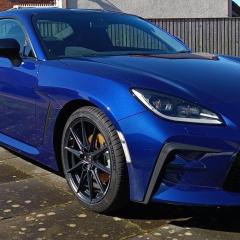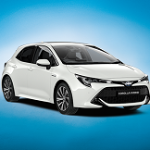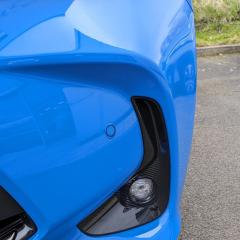Leaderboard
Popular Content
Showing content with the highest reputation on 09/18/2021 in all areas
-
Again, I say Citroen ConnectedCam - been around on C3 for several years e.g. https://www.carmagazine.co.uk/car-news/tech/does-it-work-citroen-c3s-connected-cam-built-in-dashcam/ & I believe coming to C5.4 points
-
My wife is using the RAV today for a long trip to visit family. A quick look on the app and I see she is safely at the destination in good time for lunch at 11.40. Better still, I will be able to see when she is setting off home and her progress, so I know when to throw on the dirty clothes and look like I have been working on grouting the patio all day instead of watching youtube.4 points
-
I've just returned from the Whitby area where I encountered a couple of 20% inclines. Always a bit hairy but I did not hesitate to use B mode on the way down to help control the vehicle. I'm pleased to say the car handled the steep uphill journeys very well too. I don't know the technical ins and outs of energy savings and whatnot, I'm just a regular driver. I just wanted to chip in and say that personally I use B mode at every opportunity including the short-ish downhill approach to my home address. It helps with controlling the speed of descent and reduces the amount of time my foot is on the brake pedal. You do have to remember to switch back to Drive mode when done, though. I have delayed doing that on occasion and wondered why the car wasn't quite as responsive as usual. LOL. 🤪4 points
-
I use B mode going down hill when I see the down hill warning triangle with the words engage low gear now underneath. With a manual box you would choose a lower gear to get engine braking with the 1.8 Corolla you use B mode. I'm often in Snowdonia North Wales and use it quite a lot and as Ian says it's S mode and flappy paddles on the 2 litre.3 points
-
I've had 7 Prius Hybrids and 1 RAV4 Hybrid since 2002 and done a third of a million miles in them. Some of the time I did 80 miles or more a day during the week, more recently now I'm retired anything from 10 to 40 miles a day, with a few days a month where the car isn't used at all. During these times I've never had a problem with either the basic 12V battery (which mainly starts the computers and runs a few pumps, door locks alarm, lights etc.) or the High Voltage battery that helps drive the car. There was one year when my main Hybrid was only used a couple of days a month for mostly short journeys (5-10 miles) and the odd longer one (200 miles), but this caused no problems with the batteries. It did, however, cause the brakes to rust more and need early replacement, but that's another story. The the cars have been parked for one or two weeks at airports occasionally (3 weeks on one occasion) and a couple of times during illness the car has been unused for almost a month. None of these presented any problems. What can cause a problem with the 12V battery is very tiny daily mileages (like less than 3), or longer periods of not being used, like during the lockdowns imposed during the Covid Pandemic. Some people have had problems with 4-5 week holidays. As long as the car is driven (or at least in READY Mode) for at least ½ hour every week to 10 days it should be fine The reason I keep coming back to time rather than miles is the is a major difference in how the 12V battery is looked after in a Hybrid to a convectional petrol or diesel car. When you switch on your C-HR, after a second or so the work "READY" will light up in green on your instrument panel. This is known as "READY Mode" and means you can drive the car whether the engine is running or not. Usually, except on hot days, when you start the car from cold after a few seconds the engine will go through a warm-up procedure for a minute or two whether you drive it or not. After that the engine will start and stop as necessary even while you are moving. You'll quickly get used to this. The main point is that while the READY light is lit the big battery runs everything including charging the 12V battery. So whether you go for a 10 mile drive or just sit in the car without moving for 15 minutes, the 12V battery will be charged as necessary just the same. I hope that helps, but please come back if you'd like any further clarification.3 points
-
PeteB said in earlier post it doesn’t matter how many miles you drive, it’s how long the car is in Ready mode ie ready to instantly drive away. If you use the car daily to just run 2 mile down to the shops, then 2 mile back, I would suggest every day you do that you are not putting as much back into the battery as taking out. Get to winter months, and maybe you don’t go out as much then you will be more at risk of the battery being so low it won’t start the car. “We” found this out over the last 12 months with lockdown and then the cold of winter. We were going shopping once per week, my car one week, wife’s car the next week. During the cold it took its toll. The official line from Toyota is, if safe to do so, is leave the car in Ready mode for up to an hour regularly. Ready mode means the large hybrid battery (under the back seat) will charge the smaller 12v battery. This will slowly drain the hybrid battery but occasionally the computer fires the petrol engine into life which charges the hybrid battery that continues to charge the 12v battery. That process of engine running may only happen 2-4 times per hour. Alternatively, when the 12v goes flat you can connect (safely) a battery pack, about the size of a large mobile phone, using crocodile clips provided, across the 12v battery. Within a minute the car dashboard should light up then you can run the car to charge up the battery in Ready mode. Cost around £40-£50 pound. Or, and this is what we did, buy a mains powered CTEK MXS 5 slow battery charger which is suitable for both normal acid battery and AGM battery which the CHR may have. During the winter, use the charger perhaps once per week and this should keep car 12v battery in good condition. You do need a 13amp socket and preferably car near your house ie on your drive/garage. This CTEK costs about £70 but is an investment for years. Hope this helps.3 points
-
Best look at B mode as “engine breaking” not “regeneration”. it’s designed to simulate normal (non hybrid) automatic engine braking so you don’t achieve a speed overrun downhill.3 points
-
wife and her family are from Newton Stewart, I go there nearly every month 🙂 My first experience with my new Rav4 told me the Toyota sat nav doesn't really know what its doing.... Driving over the Erskine Bridge from Paisley to Helensburgh at weekend and I know Helensburgh is far left side so to keep the left lane for Loch Lomond and then take the cut off for Helensburgh but no... my sat nav wanted me to take "keep right for Glasgow"... completely in the wrong direction.2 points
-
I found B mode useful when driving continuously downhill on any country lanes and B roads where if you don’t switch to B have to keep the brakes constantly on. I like sometimes instead of B mode to switch to neutral N instead and use brakes only, it does help maintain well polished the brake discs and heat up all brake components therefore any trapped moisture can evaporate particularly from around callipers and slider pins to prevent sticking parts due to a rust, something that hybrids suffer a lot. No need to make the discs red hot though 👍2 points
-
In ICE cars, the 12v battery is charged by the engine via the alternator - Usually 10-20 minutes of mid/high-RPM driving or 30-45 mins of town driving/idling will put a good chunk of charge into the 12v battery. In hybrids and EVs, the 12v is charged from the traction battery - Usually 30-60 minutes of just sitting there in Ready/On mode is enough to put a decent charge into the 12v battery.2 points
-
Firstly, you should understand that B mode reduces the amount of regenerated energy recovered. It's surprising how many Toyota people have said the opposite. It does nothing while the accelerator is pressed, and works only when the accelerator is released. As Joe mentioned it can be useful in snow/ice, and I've done that quite a few times. A good reason to use it is any time doing so helps in controlling the car. Having said that, most people use it very little or even never, unless they live in very hilly regions or close to one or two very long, steep hills. The time you really do want to use it is if you've descended a hill that's long enough and steep enough to completely fill the usable part of the HV (High Voltage or traction) battery (often referred to as "maxed out"). This can be one to two miles after the eighth (fourth for Gen 1 Prius) bar of the battery gauge lights up. Depending on which vintage of Hybrid system you have, various things happen at this point, the main one being that all regeneration ceases and all braking is done with the friction brakes. In some more recent versions I'm told the engine also revs up (not using any fuel) to use pumping action to help slow the the car. Some cars like the RAV4 Hybrids and many Lexus Hybrids have "S" (Shift) Mode instead of "B Mode where the transmission selector is moved towards the driver from the "D" position and by pushing it forward or back can shift between different levels of 'engine braking', simulating 'gears'. A few models can also change levels using paddles behind the steering wheel. In the original first generation Prius (2000-2003) B Mode could be used in conjunction with Cruise Control and this could be helpful when on a road with undulating hills, to minimise the car going above the set speed when passing the crest of each hill. For some reason in all subsequent generations of the Hybrid System selecting "B" (or "S") Mode while Cruise Control is active cancels CC.2 points
-
Hi, I'd pretty much given up on forums. I used to hang out on audio forums (pfm, if that means something to someone), so you may be able to guess my age. I had a Supra in the late 80s, that's a better clue. I don't have the Yaris yet, it's a 2021 model on order. The model designations in France are not the same as they are in the UK, and the availability of options is different too. The model I ordered is designated "Design" in France, it's a step up from the entry model, and it will have the hybrid powertrain. I tested a Yaris Cross, too, thinking that it was the SUV/Crossover that we (my wife & I) would order, but we both felt that we likely to get car sick in one, especially on bumpy roads! We were really taken with the Yaris IV. All previous iterations of the Yaris I had driven, I really hated. Essentially because of the very light road feedback. I looked over toyota.fr, toyota.de, toyota.be and toyota.co.uk. Clearly the marketing strategy is different between these countries, the UK having more choice of options between models. We tested the French market "Collection" spec, with all the options, and I loved the HUD, I liked the seats, I don't want the 17" wheels, and I really don't want the black roofline, nor particularly the black roof. On the other hand, our current Peugeot 208 has a panoramic roof, which I absolutely loved in Paris, but down here in the South of France, is much less of an advantage, and even a liability in the sunny months (say, beginning of March to the end of September). Anyway, that's enough of my rambling for now, and I will surely be asking more pointed questions in the Yaris forum. Cheers P.1 point
-
1 point
-
That is awesome and I wish everyone did it instead of messing about with gimmicky rubbish noone needs like cornering foglights.1 point
-
After 2 years of ownership of my Corolla Design (HB) 1.8 i've decided to move onto something else! Today a put a deposit down on a... Corolla (HB) GR Sport 2.0 in Manhattan Grey (not bi-tone). Test drove a GR Sport (1.8) today and then tried an Excel (2.0) just to see the power difference at my local dealership and i was sold on the HUD display... i know simple things but also the little GR accents dotted all over the place, the down side is that i will need to wait until October (approximately). Anyway, don't be sad i'm still on the Corolla team! 🙂1 point
-
To be fair AndrueC there isn't much in it maybe 10 minutes max going by Clatteringshaws. As you say A roads in Scotland can be like a B road this is definitely one of them , its not the greatest of roads in the winter where it can be affected by ice and the odd time by snow1 point
-
Yeah mine took me on a magical mystery tour to shave a couple of miles off the run from the M6 to Newton Stewart in Dumfries and Galloway. To be fair having visited it before a couple of times I knew I could stay on the A75 all the way but I was curious as to what it intended and it was signed as being another A road: https://goo.gl/maps/hKRyH11qrqkEEQek9 It was lovely countryside with some great views but it reminded me that the Scottish concept of an 'A' road is not the same as the English one and it was a bit much after having already driven 300 miles. https://goo.gl/maps/yg4iupEhiJLuuSHu5 Clatterinshaws Loch looks lovely in Summer but I just wanted to reach my B&B in time for dinner 😄1 point
-
Rotrax supercharger are used with the 1kr https://www.tts-performance.co.uk/single-post/2017/03/09/toyota-aygo the blitz kits have been discontinued a long time ago1 point
-
Absolutely no point, an exhaust, intake and remap your into £1000 for 15 ish bhp, tbh decent tires and sorting the suspension will have a bigger impact A turbo or supercharger once you build the engine you into £4000 upwards, a piggyback or standalone you're looking at £900 to £2K on its own (parts only) your better off, putting money into a different car like a 1.3 or 1.5 yaris1 point
-
Apple car play and the co pilot app. or Android auto and Waze. built in sat nav has no filter for “ no B roads or farm tracks”1 point
-
I use it on some steep hills in Lincolnshire. Entry speed is usually around 60 and there are sharp bends at the bottom max 30 or so.1 point
-
I asked Toyota and the answer was 'tap the screen as soon as the options appear.' It seems to work, but why does it have to disappear at all?1 point
-
1 point
-
In the early days of the Gen 2 Prius (2004-2009) there were lots of amusing tales of owners doing all sorts of contortions to climb over seats and into the boot from the driver's door to remove some trim on the back door that gave access to an internal release handle so they could connect jump leads or a jumpstarter to the 12V battery. As well as explaining about the jump terminals under the bonnet, the 'technical term' RTFM was bandied about quite a bit in that era!1 point
-
Exactly - the car knows where it is at any given time, but only reports its position etc. in an emergency ...1 point
-
I joined my last company in 1970 and to talk to someone in the USA, parent company, you’d have to book a call for a time slot that was allocated at the GPO’s convenience rather than yours. How things have changed, I now use a SIM to give me internet service at our family lodge in Derbyshire out of reach of BT lines.1 point
-
@Cyker, that makes sense, maybe active but not logging the trip data for upload but active for the purposes of an emergency.1 point
-
Thanks for all your input, I understand a bit better now the ''ready'' mode, all be it a little alien. Although I have been driving for the best part of 60+ yrs, bikes, cars and HGV Europe I am looking forward to my C-HR and gadgets, which only half will be used. My concern with the battery, which has been reported on here and elsewhere, is the hospital visits that me and my wife have to endure now, so reliability is needed. The reason to move back to Toyota.1 point
-
On the 2.0 the flappy paddles do the same job as the B selection. Selecting S with the gear shift and using simulated manual does so as well.1 point
-
I tried B mode, I can't see the engine revs but it sounded and felt like when you put a regular car deliberately in too low a gear, to boost the revs to boost engine braking. Only time I did that in my regular car was for particularly steep or long downhills, ones where you might be concerned about over-heating the brakes or loss of control, so far I'm taking the same approach with the hybrid and using B mode only in those particular situations where it's needed. Plus I can't imagine using it when not needed is good for efficiency, if the engine is running at unnecessarily high revs and getting rid of energy by pumping air through it, that's energy not being recovered into the battery.1 point
-
I too,forget to drop back into D,so your foot says Go the engine says Whoa. Would'nt like to drive on like that.1 point
-
Yeah, you do quickly notice how much more deceleration the car has in B-mode if you forget to turn it off! It's like being in 1st/2nd gear instead of 3rd/4th!1 point
-
1 point
-
Never used it on the last car and I've noticed it doesn't exist on my 2.0, not that I'll miss it 😂1 point
-
1 point
-
Yep, I done those steep hills around Whitby, B mode made for situations like that. Your 2nd para. I too are more interested using B for the purpose it was put there for. Whether energy bars go up, down or stay where they are, steep hills demand respect and I don’t want brake fade so glad B mode is there to help.1 point
-
Hi, the posts above explain the slight difference between standard cars and hybrids, the mileage really it’s not that important as it is the time spent with car set into Ready mode (ON), if you are planning to use the car every day and use it only for a short trips to shops or school runs less than 15min each time then your 12v battery may have not enough time to be recharged properly and may lost power prematurely, refuses to unlock and start the car. General rule here is as with all other vehicles, more you drive better it is. From a first hand now: my Auris hybrid was previously only used for a short school runs in the morning for around 3 miles round trip (20-30min London traffic) and weekends drive outside town for around 40 miles 1-1.5 hrs drive), sometimes the car was also left without any use for up to 4 weeks., then after 3 years of light use I took over and start driving it 200 miles per day and over 10-12 hrs spent time in, we never had any issues with the batteries. My advice is to use your car as normally you do but make sure you always keep the car in ready mode while seating inside waiting for someone for example. Keeping your car in ready mode (car ready to drive) recharges the 12v battery and once in a while a longer outside town trips are also helpful. If you are planning to leave your car without use for extended period of time best to have external source of power like ctek charger, solar charger or power bank especially in cold winter days. If you are using your car every day for 30 min or more you should have no worries then. That’s my story, I hope it helps. 👍1 point
-
@ihpj, there is no way ANY clutch that works on friction can or could be expected to last the life of the vehicle. By definition it wears every time it is used, whether operated by the MMT system or your left leg and eventually that wear will be terminal.1 point
-
1 point
-
In the uk it’s Excel that is the top model, leather seats, 10 speaker JBL sound, sat nav, maybe a couple more safety aids, oh and cordless phone charging (which I don’t use). Business Plus has a sat nav but fabrics seats, and standard speaker system. The standard Business does not have sat nav, probably less a few other things as well. I got the Excel as I wanted leather seats and the JBL sound system, I don’t use the sat nav as I prefer Google Waze.1 point
-
1 point
-
Zero! Seriously, it doesn't matter how far you drive, it's time in READY Mode that matters, and the 12V battery is charged from the big battery. In some bulletins Toyota put out during the lockdowns they recommended an hour a week, but I found 20-30 minutes on the drive every 10 days or so kept my car alive just fine.1 point
-
Its honestly massively complicated but in short the EU ( which we still agree to comply with ) have average emission targets which all the manufacturers have to comply with, in 2021 a manufacturers entire range should have a average co2 output of 95g/km the fines are 95 euro per gram per car sold over the average and could total hundreds of millions in fines so manufacturers are pairing their ranges and adding electric models, Toyota is ahead of all the mainstream brands and one of the few likely to avoid fines, see HERE Creating a high end model with everything on it would be contrary to the above hence why they pick a lower range model which with a % variance allowed give a lower average co2 for the whole model Cost is also a huge factor homologating additional models costs millions, now for a relatively small market such as the UK if Toyota can cover the majority of sales with just one RHD model homologated they will as the potential extra sales of an additional higher spec model are highly unlikely to recover the additional cost of homologating an extra model type whereas the EU has a comparatively huge market which can justify the additional costs, sales potential on the continent means they can have 5 models homologated to our 1 1 x 1.0 Conventional Manual 1 x 1.5 Conventional Manual 1x 1.5 Conventional CVT 2x 1.5 Hybrid allowing a greater model range Now the additional conventional an hybrid models available on the continent negatively affect the fleetwide average CO2 but the additional sales volume offsets the cost implication whereas if we had all the extra models in the UK we would have the same negative CO2 affect in addition to the EU models but without the offsetting sales volume.1 point
-
If you're going to run a dashcam in 'sentry mode', it is a good idea to plug it into a USB power bank, and plug the car's usb charger into the power bank's charging port. That way the car will charge the power bank while you drive, and it will power the dashcam when it's off, and there is no way the dashcam can drain the 12V battery. If you leave it too long it'll just discharge the powerbank and stop recording. Just make sure you get one that can supply power while charging, and get a good quality one - You don't want one of those nasty chinese ebay specials catching fire on a hot day...! A colleague uses his jump-starter as a power bank for his dashcam as it has USB power sockets - His is quite a fiddly setup tho' as it won't charge and supply power at the same time, so he has to keep swapping leads around when he gets in and out of the car... i.e. plug the dashcam and powerbank into his car USB to charge when he gets in, then when he gets out unplug both from the car and plug the dashcam into the powerbank... Personally I think I'd get annoyed doing that all the time!1 point
-
I have a similar camera with a similar "motion detection" facility (that I never use) and I would suggest to you that on any Toyota Hybrid, you will flatten the battery in no time at all if you use such a facility 24/7 while the car is not being used. (and is why I never switch the motion detection in my camera on) So, yes, of course 2.4W will not be enough in that situation. The problem with the batteries used by Toyota in all its HSD vehicles is that if you just leave an interior light on accidently (5W bulb) you'll drain the battery in hours; much quicker than a normal car with a normal size battery. Even the normal systems of the hybrid car with the ignition off, provide a faster drain compared to a normal car/battery and is why Toyota recommend running the car in "Ready" mode for at least 1Hr/week for extended periods of not being used.1 point
-
I've mentioned it before, we are an awkward market demanding/legislating the same high safety, fuel and green credentials as the rest of Europe but all packaged into a RHD car adding developments costs into what is by overall EU sales a small market. All models require homologation which with the new WLTP regulations adds massive cost which in turn means Toyota have to guarantee sufficient sales to recover such huge outlays something the GB market struggles with. At present there is only one homologated Yaris and one Yaris GR the homologation allows a % variation either side of the tested model so Toyota GB will homologate one mid spec model such as a Design then they can spec other trims that fit within the allowed variation and leaving a small margin for accessories* added by you at purchase, it becomes a massive juggling act working out what can be added to each car to suit the market buying, the allowed weight variation & cost, factor in the way options are allow from the factory where some options can be added individually but others only in packs it is a massive headache and it will not always be possible to please everyone. The GR Yaris as an example cannot be ordered with both circuit pack & convenience pack as in combination they would put the car outside of the allowed homologation, to do so would require homologation of another model type at huge expense which on a model that is already a loss leader is just not financially viable and to be fair to Toyota they didn't get it all that wrong order books are full ( & closed ) through to 2023 the lack of both circuit & convenience pack combined has not hampered he sales at all. Conventional Yaris is a similar story it has been the biggest seller in market across the EU as a whole the factory is flat out with no unsold capacity and there a very little unsold Yaris in stock in the UK (* WLTP regulations require any permanent accessory that either weighs more than 1kg or affects aerodynamics fitted by Toyota or its dealers are noted and included into the certificate of conformity issued by Toyota at point of sale, this is done after the car has been built and any POE ( port of entry ) accessories are installed and once certified if we as a dealer add more accessories that meet the WLTP requirements we would have to reapply for certification ensuring we stay within the allowed weight limits otherwise the certification will be rejected and registration cancelled or denied, As owners you are now also required to consider any alterations or modifications and notify them as well now, otherwise the taxman may decide you are underpaying tax on a car declared cleaner & more fuel efficient then it now is, the likelihood as owners of being caught is slim but as a brand or dealer the taxman only has to look at a sales invoice ( which they do ) to ensure we are complying with regulations ) An example of the new WLTP regs having an effect would be a Hilux 2.8 Double cab manual, as mentioned earlier there is only one GB homologation for this model which covers all the trims from Base active up to top of the line Invincible-X there is nearly a 100 kg difference in weight between the two trims but the upper weight allowance to meet WLTP regs is the same for both models therefore an active model can add approx. 130 kg of WLTP counting accessories whereas an Invincible-X can only add approx. 30kg consider a tow bar with electrics is 28kg legally you couldn't add 3kg rubber mats with homologating an all new model variant at massive expense.1 point
-
I had a Mk1 for 10 years until I part ex'd it for a new Mk2 in October 2020 - the Mk2 is much better (quieter, more comfortable seats, torquier engine and better tech).1 point
-
Thanks...I didnt have one. The deal and car was a no brainer for me. In part I chose auto because residual is better than the manual, interestingly. I.e £600 upgrade but residual value worth £1200 or more than manual after 3 years looking at current average prices. Im familiar with the MK 1 Aygo (manual) of which the family still drive but i'm sure newer version is quite different.1 point
-
Same here as the posts above, I am not that much into the emissions thing, although it is good to know that our hybrids are cleaner than standard ice cars. For me most important things when chosen my car were : drivability, efficiency and reliability, plus initial cost of purchase and maintenance throughout its life., Toyota hybrids deliver exactly that best of all. ✌️🚙1 point
-
1 point

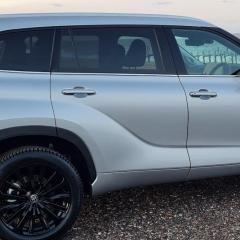
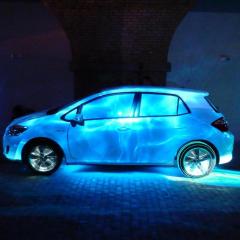



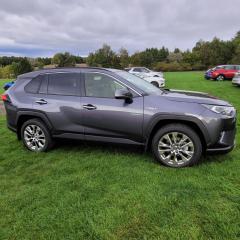
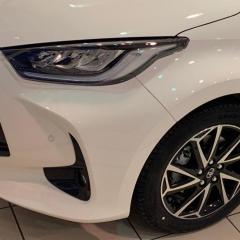



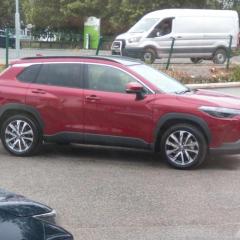




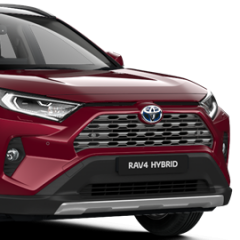

.thumb.jpg.3860d9486178b2fada28696e9974e70d.jpg)

